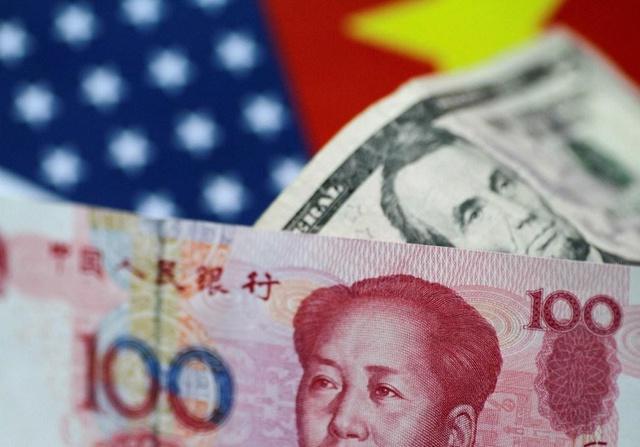 The sharp appreciation in the value of the Chinese yuan in 2018 came to a crunching halt on Thursday after Beijing cautioned against thinking the currency could move only in one direction.
The sharp appreciation in the value of the Chinese yuan in 2018 came to a crunching halt on Thursday after Beijing cautioned against thinking the currency could move only in one direction.
After more than a year of steady increases, the yuan, also known as the renminbi, fell 1 per cent against the US dollar, its biggest one-day fall since the People’s Bank of China devalued the currency on August 11, 2015. As of 2pm on Friday, the decline appeared to have been halted with the currency flat against the dollar.
In January, the yuan gained 3.5 per cent against the dollar, its steepest monthly rise since its peg to the US currency was relaxed in 2005.
After years of trying to stifle capital outflows and support the yuan’s rise, the latest word from Beijing suggests it is now adopting a more laissez-faire approach.
On Wednesday, Pan Gongsheng, head of China’s State Administration of Foreign Exchange, said in an article published on the agency’s website, that it expected to see balanced capital inflows and outflows, and would support “legal and reasonable” outbound payments.
The People’s Bank of China (PBOC) said it would maintain a “basically stable” exchange rate in 2018, while a front-page commentary in the state-run Economic Daily on Thursday warned investors against thinking the value of the yuan could only rise.
According to a report by Reuters on Thursday, Beijing has also resumed an outbound investment scheme – after a two-year hiatus – granting licences to about a dozen global money managers.
Mark Williams, chief Asia economist at consultancy firm Capital Economics, said that while China’s policymakers were determined to prevent a “one-way bet” on the yuan, the central bank was facing a dilemma. On the one hand it wanted the value of the currency to be more market driven, but on the other it wanted to prevent the build up of speculative pressure.
“That means that when the market moves the renminbi too far in one direction or the other, we will see the PBOC step in … going against the market,” he said.
“This is the classic Chinese approach. Policymakers like the market, but they like it to be managed.” he said.
The upside for China in the US stock market plunge – from the Chinese economist who tipped a big fall
Beijing has many channels at its disposal to influence the exchange rate. While the PBOC said it now refrains from direct intervention, it still publishes a daily parity price for the onshore market based on quotes from commercial banks, which in turn are subject to “guidance” from the central bank.
In May last year, the PBOC introduced a “counter-cyclical factor” designed to lessen the effect of market forces on the yuan’s value, but sources said this was effectively withdrawn last month.
Logan Wright, director of China markets research at Rhodium Group, said the central bank was taking a step back from regular intervention.
“This is consistent with its longer term objective of introducing additional flexibility into the exchange rate mechanism, which will become more important for the PBOC this year, as the direction of Chinese monetary policy may need to diverge from that of the United States,” he said.
China’s trade gap with US narrows, but Donald Trump is unlikely to be smiling about it
Alicia Garcia Herrero, chief economist for Asia-Pacific at French bank Natixis, said that Beijing’s moves to rein in its currency were understandable.
“The yuan’s rise has been too fast for what the Chinese economy can handle,” she said.
While a stronger yuan is good for Beijing in terms of appeasing Washington, whose stance on trade became more aggressive after the US trade deficit with China – based on US figures – rose to a new high of US$375.2 billion last year, it is damaging from exporters, whose goods become more expensive.
As a result, China’s economic growth would slow this year – from 6.9 per cent in 2017, Herrero said, while the contribution from exports to that expansion would weaken.
According to figures published on Thursday by the General Administration of Customs, China’s total exports, measured in US dollar terms, rose 11.1 per cent year on year in January, while imports surged 36.9 per cent.
Xie Yaxuan, head of China Macroeconomic Research at China Merchants Securities, said that the recent slump in global stock markets and the upcoming Lunar New Year holiday in China had also contributed to the yuan’s slide as they had driven up demand for foreign currencies.




